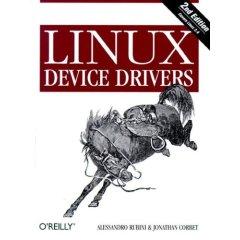| 2020ok Directory of FREE Online Books and FREE eBooks |
Free eBooks > Computers & Internet > Operating Systems > Unix > General > Linux Device Drivers, 2nd Edition
Linux Device Drivers, 2nd Editionby Alessandro Rubini and Jonathan Corbet  Download Book (Respecting the intellectual property of others is utmost important to us, we make every effort to make sure we only link to legitimate sites, such as those sites owned by authors and publishers. If you have any questions about these links, please contact us.) link 1 link 2 About Book Amazon.com Updated to cover version 2.4.x of the Linux kernel, the second edition of Linux Device Drivers remains the best general-purpose, paper-bound guide for programmers wishing to make hardware devices work under the world's most popular open-source operating system. The authors take care to show how to write drivers that are portable--that is, that compile and run under all popular Linux platforms. That, along with the fact that they're careful to explain and illustrate concepts, makes this book very well suited to any programmer familiar with C but not with the hardware-software interface. It's worth noting that the emphasis in the title is on "device drivers" as much as "Linux." This book will make sense to you if you've never written a driver for any platform before. It helps if you have some Linux or Unix background, but even that is secondary as a prerequisite to C skill. For a programming text--and one concerned with low-level instructions and data structures, at that--this book is remarkably rich in prose. You'll typically want to read this book straight through, more or less skipping the code samples, before sketching out your plan for the driver you need to write. Then, go back and pay closer attention to the sections on specific details you need to implement, like custom task queues. For coding-time details about specific system calls and programming techniques, count on the index to point you to the right passages. --David Wall Topics covered: Techniques for writing hardware device drivers that run under Linux kernels 2.0.x through 2.2.x. Sections show how to manage memory, time, interrupts, ports, and other details of the hardware-software interface.
Version 2.4 of the Linux kernel includes significant changes to device drivers, simplifying many activities, but providing subtle new features that can make a driver both more efficient and more flexible. The second edition of this book thoroughly covers these changes, as well as new processors and buses. You don't have to be a kernel hacker to understand and enjoy this book; all you need is an understanding of C and some background in Unix system calls. You'll learn how to write drivers for character devices, block devices, and network interfaces, guided by full-featured examples that you can compile and run without special hardware. Major changes in the second edition include discussions of symmetric multiprocessing (SMP) and locking, new CPUs, and recently supported buses. For those who are curious about how an operating system does its job, this book provides insights into address spaces, asynchronous events, and I/O. Portability is a major concern in the text. The book is centered on version 2.4, but includes information for kernels back to 2.0 where feasible. Linux Device Driver also shows how to maximize portability among hardware platforms; examples were tested on IA32 (PC) and IA64, PowerPC, SPARC and SPARC64, Alpha, ARM, and MIPS. Contents include:
Book Info Handbook for Linux users who want to support computer peripherals or develop new hardware and run it under Linux. Requires only some knowledge of C and some background in Unix system calls. Provides insights into address spaces, asynchronous events, and I/O. Softcover. DLC: Linux device drivers (Computer programs). Related Free eBooks
| Related Tags |












SEND A COMMENT
PLEASE READ: All comments must be approved before appearing in the thread; time and space constraints prevent all comments from appearing. We will only approve comments that are directly related to the article, use appropriate language and are not attacking the comments of others.